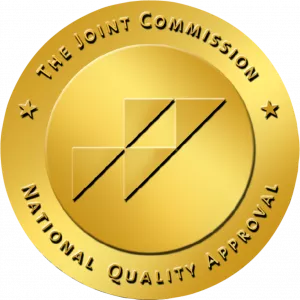At first glance, Adderall and Suboxone seem like polar opposites. Adderall is a powerful stimulant often prescribed for Attention Deficit Hyperactivity Disorder (ADHD). The other is a partial opioid agonist, designed to ease withdrawal symptoms and aid in addiction recovery.
What happens when they intersect? Is it safe to take both, or does this combination pose hidden dangers? In this article, Avenues Recovery compares Adderall and Suboxone, explores why people take Suboxone and Adderall together, and discusses the side effects of combining the two drugs.
What Is Adderall?
Categorized as a stimulant, Adderall raises dopamine and norepinephrine levels within the brain. This results in improved focus, attention, and impulse control, which is particularly beneficial for individuals grappling with ADHD. Adderall is also helpful for people who suffer from narcolepsy by helping them manage daytime sleepiness and improve wakefulness. It is generally misused in college and high school, when students seek to boost their focus during exam season. Adderall is also misused by people who work in high-pressure jobs with few breaks.
What Is Suboxone?
Suboxone is prescribed to address addiction to prescription or illicit opioids and contains two key ingredients: buprenorphine and naloxone. Buprenorphine helps to diminish cravings and withdrawal symptoms, while naloxone blocks opioid effects, serving to deter Suboxone misuse and reverse opioid overdose effects. Suboxone is generally part of a larger treatment plan for opioid addiction, which may include counseling and therapy. If you or a loved one struggles with Adderall or Suboxone addiction, contact Avenues Recovery for guidance on our treatment programs and the journey to recovery.
Can You Take Suboxone With Adderall?
Taking Suboxone and Adderall together is generally discouraged. Typically, Adderall is considered only after a person successfully tapers off Suboxone. Buprenorphine, a component of Suboxone, induces central nervous system depression, while Adderall prompts central nervous system stimulation. Mixing these substances may lead to a situation where the effect of each drug is lessened, potentially causing a person to take more and increasing the risk of overdose.
If someone is recovering from opiate use disorder and they also suffer from narcolepsy or ADHD, their doctor may prescribe Adderall and Suboxone at the same time. When used under the careful supervision of a doctor, these two medicines may be taken together safely.
Suboxone and ADHD Treatment
Suboxone is not approved or recommended for the treatment of ADHD; rather, it is a medication used for the treatment of opioid dependence. It contains buprenorphine, which is a partial opioid agonist, and naloxone, an opioid antagonist. These two components are intended to help individuals manage opioid withdrawal symptoms and reduce cravings during addiction treatment, but not to manage ADHD.
ADHD is a neurodevelopmental disorder, and its treatment typically involves medications that affect neurotransmitters like dopamine and norepinephrine in the brain. Common medications used for ADHD include stimulants, such as Adderall, Ritalin, and Concerta, and non-stimulants, such as atomoxetine and guanfacine.
Will Suboxone Block Adderall?
No, Suboxone will not block the effects of Adderall. Suboxone blocks the effects of opioids like hydrocodone, heroin, fentanyl, and oxycodone. While Suboxone doesn’t block the effects of Adderall, it could dampen some of the stimulant effects due to its calming properties.
Combining medications without proper medical supervision can be risky. If you are prescribed both Suboxone and Adderall, it is vital to follow your doctor’s instructions exactly and never increase or decrease your prescription on your own.
Side Effects of Taking Suboxone and Adderall Together
Potential side effects of mixing Adderall and Suboxone include:
- Increased heart rate
- Increased blood pressure
- Nervousness and anxiety
- Insomnia
- Nausea and vomiting
- Drug interactions
Adderall vs. Suboxone
|
Feature |
Adderall |
Suboxone |
|
Primary Use |
Treatment of Attention Deficit Hyperactivity Disorder (ADHD) and narcolepsy |
Treatment of opioid dependence and addiction |
|
Active Ingredients |
Amphetamine and dextroamphetamine salts |
Buprenorphine and naloxone |
|
Class |
Stimulant |
Opioid partial agonist/antagonist |
|
Mechanism of Action |
Increases levels of dopamine and norepinephrine in the brain, enhancing focus and alertness |
Buprenorphine binds to opioid receptors, reducing opioid cravings and withdrawal symptoms; naloxone prevents misuse by injection |
|
Abuse Potential |
Has a high potential for abuse and dependence |
Lower abuse potential compared to full opioid agonists, but still has some potential for misuse |
|
Addiction Treatment |
Not used for addiction treatment |
Specifically used for opioid addiction treatment |
|
Side Effects |
Insomnia, loss of appetite, increased heart rate, anxiety |
Nausea, headache, constipation, and withdrawal symptoms in opioid-dependent individuals |
|
Dependency and Withdrawal |
Can lead to dependence and withdrawal symptoms if misused or abruptly stopped |
Used to manage opioid dependence and may cause withdrawal symptoms if stopped abruptly |
|
Prescription Regulation |
Controlled substance with strict regulations |
Also a controlled substance with regulations, but less restrictive than stimulants like Adderall |
|
Interactions with Other Drugs |
Can interact with certain medications and increase the risk of side effects |
Interactions may occur, especially with other opioids or medications affecting opioid receptors |
|
Availability |
Prescribed for ADHD and narcolepsy; tightly regulated |
Prescribed for opioid addiction treatment; regulated but more accessible than some other controlled substances |
Treatment for Suboxone and Adderall Abuse
Below is an outline of the general treatment for Suboxone and Adderall abuse:
- Medical Detoxification: For Suboxone and Adderall abuse, drug detox treatment may be necessary. This involves supervised withdrawal in a controlled medical setting, where healthcare professionals can manage withdrawal symptoms and provide support.
- Behavioral Therapy: Behavioral therapy is often a key component of substance abuse treatment. Cognitive-behavioral therapy (CBT), contingency management, and motivational enhancement therapy are examples of effective approaches in addressing the underlying issues contributing to substance abuse.
- Support Groups: Support groups, such as Narcotics Anonymous (NA) or SMART Recovery, can provide a sense of community and understanding. Sharing experiences with others who have gone through similar struggles can be beneficial.
- Medication-Assisted Treatment (MAT): MAT may be considered, especially for opioid addiction. Suboxone itself is a combination of buprenorphine and naloxone and is sometimes used in MAT to help manage cravings and withdrawal symptoms.
- Individual Counseling: Individual counseling sessions with a therapist or counselor can help individuals explore the root causes of their substance abuse, develop coping strategies, and set goals for recovery.
- Medical Monitoring: Regular medical check-ups and monitoring are essential to ensure the individual's overall health and address any physical or mental health issues that may arise during the recovery process.
- Comprehensive Treatment Plan: A comprehensive treatment plan should address both the opioid (Suboxone) and stimulant (Adderall) components of the abuse. It may involve a combination of therapeutic interventions and pharmacological approaches.
Find Adderall and Suboxone Addiction Treatment at Avenues Recovery
If you or a loved one struggles with Adderall or Suboxone addiction, contact Avenues Recovery Center for guidance on addiction recovery. Addiction may feel overwhelming, but with the right help and direction, you can and will recover. Avenues Recovery is committed to delivering the highest level of care and support. Our dedicated staff are experts in the field of addiction and have successfully helped thousands of people reach sobriety. We use a mix of traditional and holistic therapies as well as personalized treatment plans to facilitate optimal success. If you would like to begin the journey to recovery, contact us today. We will be at your side every step of the way!
Adderall and Suboxone FAQs
What are the potential side effects of taking Adderall?
Common side effects of Adderall include increased heart rate, anxiety, insomnia, dry mouth, and appetite loss.
Does Suboxone use pose any risks?
Suboxone is generally well-tolerated when used as prescribed, but risks include physical dependence, withdrawal symptoms upon discontinuation, and side effects like dizziness and headaches.
What should I do if I have concerns about taking Adderall and Suboxone together?
If you're prescribed both Adderall and Suboxone, it’s crucial to have regular check-ups with your healthcare provider to discuss any concerns or side effects you experience. Never adjust your dosage or combine medications without medical supervision.
Is it safe to take Adderall and Suboxone if I have a history of mental health issues?
If you have a history of mental health issues, taking Suboxone and Adderall together requires extra caution. Both medications can influence mood and behavior, so it’s important to work closely with your doctor to monitor any changes in your mental health.
What should I do if I experience side effects from taking Adderall and Suboxone together?
If you experience side effects such as increased heart rate, chest pain, dizziness, or severe mood changes when taking Adderall and Suboxone together, you should seek medical advice immediately. Discuss any adverse effects with your doctor and adjust your treatment plan accordingly.



